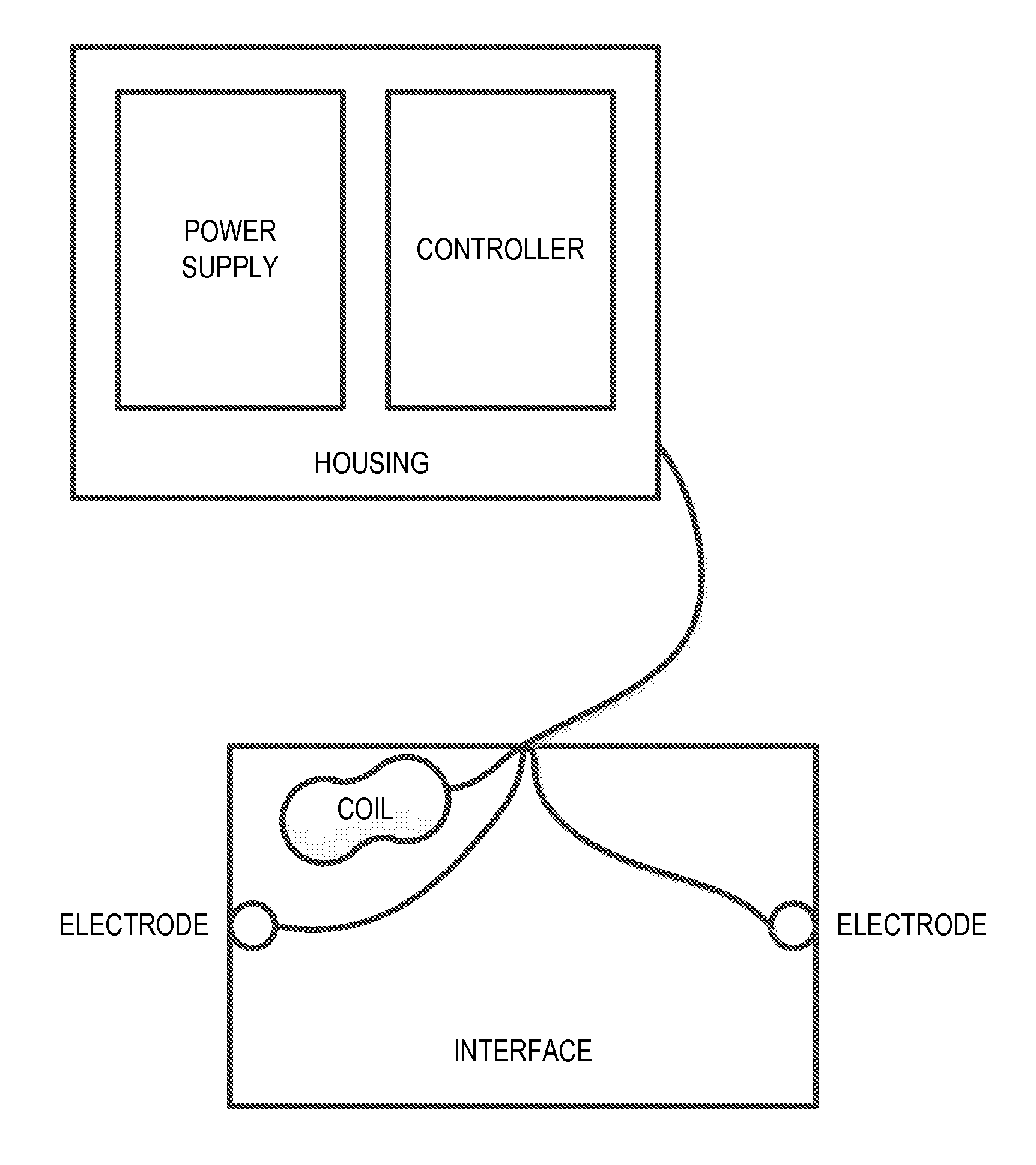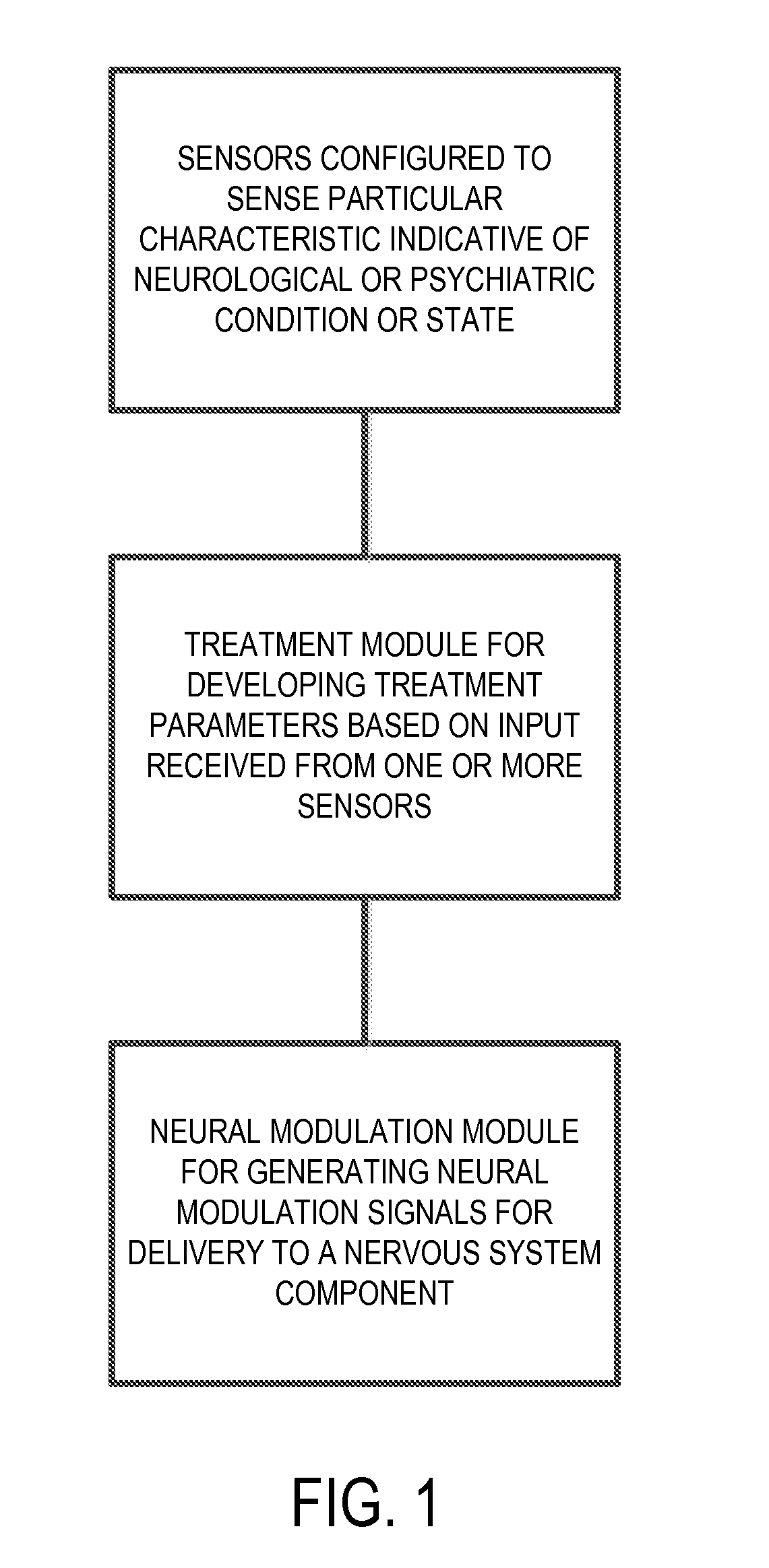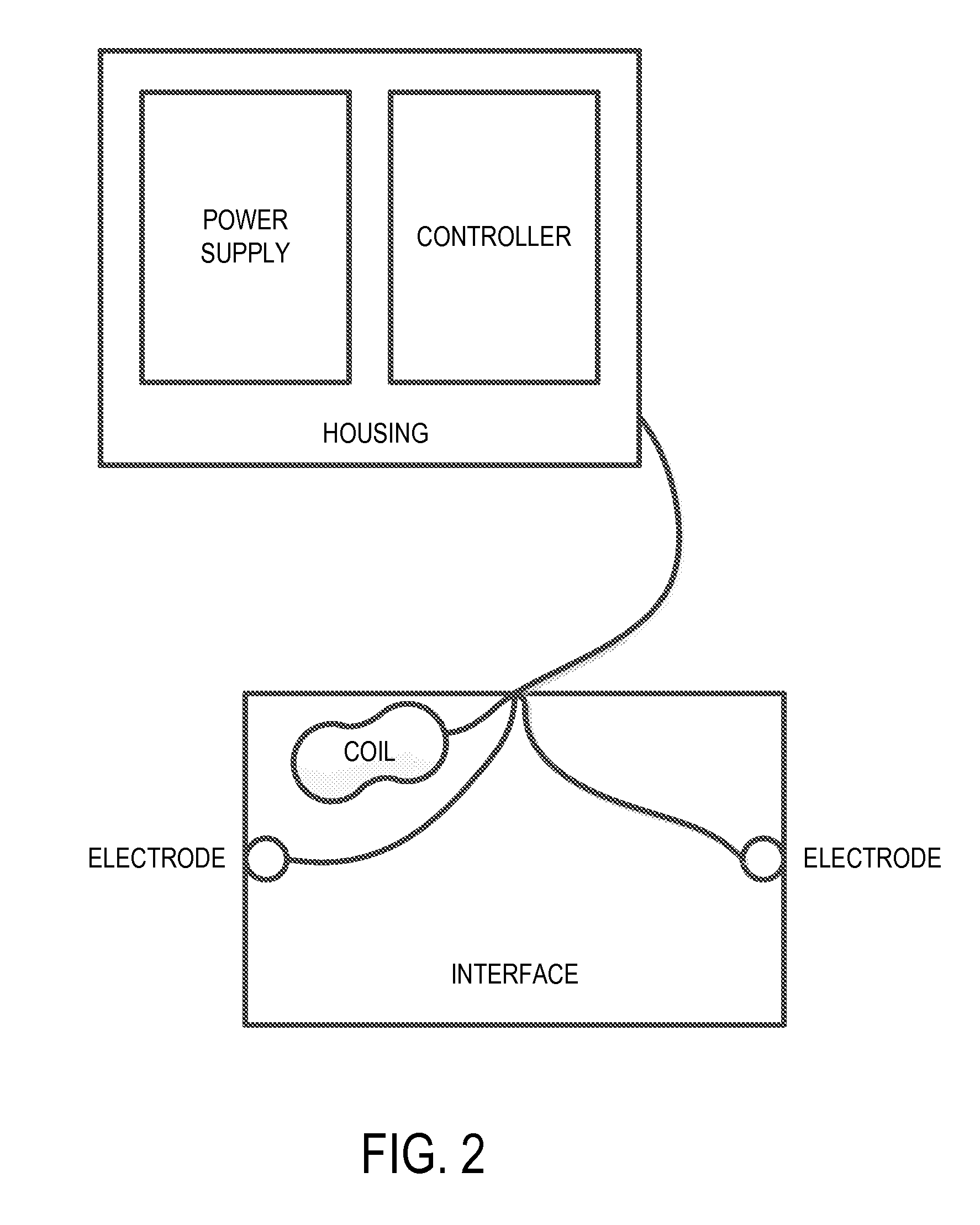Methods and systems for diagnosis and treatment of neural diseases and disorders
a neural disease and disorder technology, applied in the field of neural disease and disorder diagnosis and treatment, can solve the problems of patients being subjected to periods of over-treatment and under-treatment, limited effect, and difficult and often impossible to arrive at optimal treatment, so as to reduce time and the number of interactions
- Summary
- Abstract
- Description
- Claims
- Application Information
AI Technical Summary
Benefits of technology
Problems solved by technology
Method used
Image
Examples
example 1
Pattern Recognition of Seizure
[0063]A group of subjects clinically diagnosed with epilepsy are individually evaluated using an EEG system for monitoring brain activity in the frontal cortical region. A control group of healthy subjects are individually evaluated in parallel using an EEG system. The EEG input is collected and analyzed, and a common pattern or patterns of epileptiform discharges is observed for the group of epileptic subjects.
example 2
Treatment of Seizure
[0064]A subject is evaluated using an embodiment of the invention in which EEG is detected as signal input and TMS is administered as either single pulsed or repetitive neuromodulatory stimulation output. The subject's brain activity is monitored using EEG, and the EEG input is analyzed. When the subject experiences seizure, a pattern of brain activity associated with seizure is identified, and TMS is administered to the subject by an operator or software following a seizure treatment protocol. The TMS is administered over a wide range of frequencies (0.5 Hz to over 100 Hz), periods encompassing single sessions to months of daily sessions, pulse widths and polarities. Over the course of treatment, the patient's seizure symptoms diminish, as evaluated by clinical factors as well as EEG analysis of brain activity.
example 3
Optimization of Neurostimulatory Location
[0065]A group of subjects clinically diagnosed with epilepsy are individually evaluated using an EEG system for monitoring brain activity. A second group of subjects clinically diagnosed with epilepsy are individually evaluated in parallel using an EEG system. The EEG input is collected and analyzed, and a common pattern or patterns of epileptiform discharges is observed for both groups of epileptic subjects when the subjects suffer epileptic seizures. The first group is treated with TMS according to a seizure treatment protocol, and the TMS is administered over a wide range of frequencies, periods, pulse widths, and polarities to a first cortical location on each subject within the group. The second group is treated with TMS according to a seizure treatment protocol, and the TMS is administered over a wide range of frequencies, periods, pulse widths, and polarities to a second cortical location on each subject within the group. Over the cour...
PUM
 Login to View More
Login to View More Abstract
Description
Claims
Application Information
 Login to View More
Login to View More - R&D
- Intellectual Property
- Life Sciences
- Materials
- Tech Scout
- Unparalleled Data Quality
- Higher Quality Content
- 60% Fewer Hallucinations
Browse by: Latest US Patents, China's latest patents, Technical Efficacy Thesaurus, Application Domain, Technology Topic, Popular Technical Reports.
© 2025 PatSnap. All rights reserved.Legal|Privacy policy|Modern Slavery Act Transparency Statement|Sitemap|About US| Contact US: help@patsnap.com



